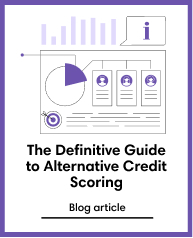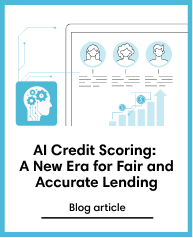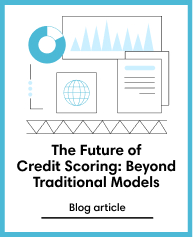Credit Scoring
Jan 20, 2022
Stimulus Worked: Why We Should Build On This To Widen Credit Access
Subscribe to our newsletter
According to a recent Bankrate survey, only 39 per cent of Americans could comfortably pay for a surprise expense of $1,000.
Bankrate’s survey reveals many more interesting findings of how people would need to cover the expense:
- 18 per cent would put it on a credit card, bearing the interest charges as they pay it down
- 12 per cent would borrow from family or friends
- and 8 per cent would seek a loan.
It’s a reminder that many Americans — and many other people worldwide — need to access financial products to keep their heads above water.
Financial services should serve everybody
But here’s the thing. Millions more can’t even access these products. Imagine being hit with an unexpected expense in your own life and having no way to deal with it. An estimated 40 per cent of US consumers struggle with financial inclusion.
- Some 25 million people have zero presence at the credit bureau.
- There are another 28 million people with a very limited presence at the credit bureau.
- And then there are another 70 million so-called sub-prime borrowers, locked out of access to the most fairly priced financial products.
But it’s not all doom and gloom. Financial inclusion may have been made even more difficult to challenge in the wake of the pandemic. But it also taught politicians, lenders, and non-bank lenders something very useful. Stimulus works. Giving people financial resources works.
Why pandemic loan default rates are low
That sounds like a bold claim. But it’s true. Look at the US Federal Reserve’s figures on loan delinquencies between 2008 to 2012, and you will see clearly how badly the Global Financial Crisis (GFC) affected loan repayments. The delinquency rate was above 10 per cent at certain points during that time frame. But if you look at the same figures for 2020 and 2021, loan repayments are better than pre-pandemic. They stayed below three per cent.
That’s because the government created the Paycheck Protection Program (PPP). And because lenders agreed to forbearance. The takeaway is clear - we can widen their access to financial services and protect loan books by giving people financial resources.
Lenders can be leaders — with new tools and tactics
The post-pandemic era doesn’t have to be a story of debt. It can be a story about empowerment. Together with governments, industry groups, and nonprofits, purpose-driven lenders can start to ask the right questions about borrowers. They can harness alternative credit scoring data to overcome the obstacles created by traditional credit bureaus blind spots.
New partnerships and tools can help lenders meet consumers that don't have a credit bureau footprint to empower them. That could be a young consumer wanting a better option than a short-term, higher risk, higher price, credit product? That could be a renter who may want to establish a credit bureau footprint so they can seek their first home.
Because financial services should be for everyone, if the pandemic has taught the industry anything, it can take actions that help millions of people avoid impossible choices about their finances.
--
Michele Tucci is Chief Product Officer of credolab, a fintech company that gives businesses highly-predictive behavioural data for fast, fair, and error-free credit scoring. The World Economic Forum recognises Credolab as one of the world’s Top 100 Technology Pioneers.





